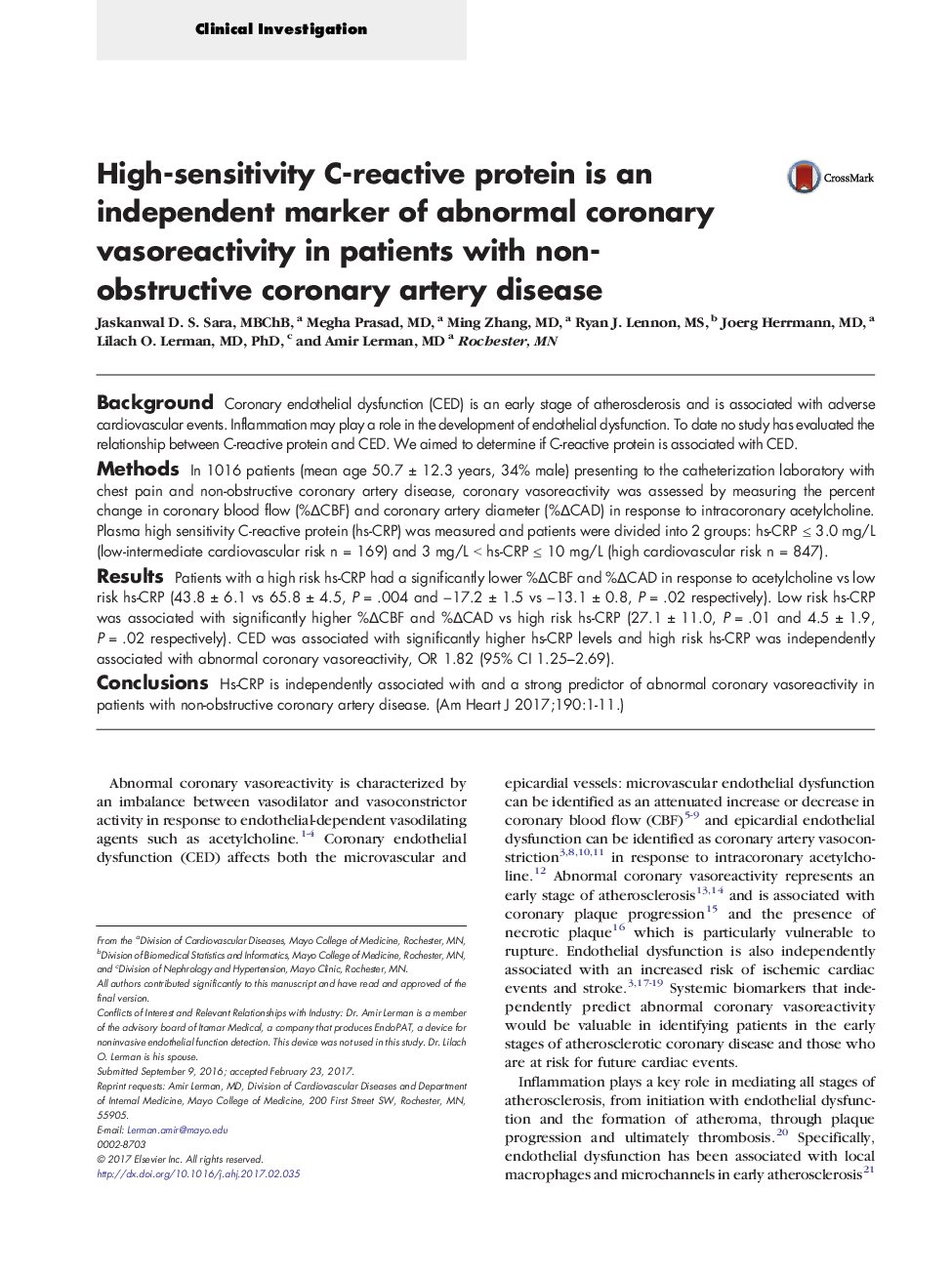| Article ID | Journal | Published Year | Pages | File Type |
|---|---|---|---|---|
| 5594355 | American Heart Journal | 2017 | 11 Pages |
BackgroundCoronary endothelial dysfunction (CED) is an early stage of atherosclerosis and is associated with adverse cardiovascular events. Inflammation may play a role in the development of endothelial dysfunction. To date no study has evaluated the relationship between C-reactive protein and CED. We aimed to determine if C-reactive protein is associated with CED.MethodsIn 1016 patients (mean age 50.7 ± 12.3 years, 34% male) presenting to the catheterization laboratory with chest pain and non-obstructive coronary artery disease, coronary vasoreactivity was assessed by measuring the percent change in coronary blood flow (%ÎCBF) and coronary artery diameter (%ÎCAD) in response to intracoronary acetylcholine. Plasma high sensitivity C-reactive protein (hs-CRP) was measured and patients were divided into 2 groups: hs-CRP â¤Â 3.0 mg/L (low-intermediate cardiovascular risk n = 169) and 3 mg/L < hs-CRP â¤Â 10 mg/L (high cardiovascular risk n = 847).ResultsPatients with a high risk hs-CRP had a significantly lower %ÎCBF and %ÎCAD in response to acetylcholine vs low risk hs-CRP (43.8 ± 6.1 vs 65.8 ± 4.5, P = .004 and â17.2 ± 1.5 vs â13.1 ± 0.8, P = .02 respectively). Low risk hs-CRP was associated with significantly higher %ÎCBF and %ÎCAD vs high risk hs-CRP (27.1 ± 11.0, P = .01 and 4.5 ± 1.9, P = .02 respectively). CED was associated with significantly higher hs-CRP levels and high risk hs-CRP was independently associated with abnormal coronary vasoreactivity, OR 1.82 (95% CI 1.25-2.69).ConclusionsHs-CRP is independently associated with and a strong predictor of abnormal coronary vasoreactivity in patients with non-obstructive coronary artery disease.
